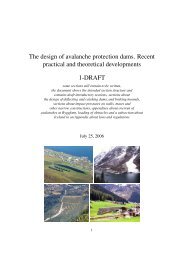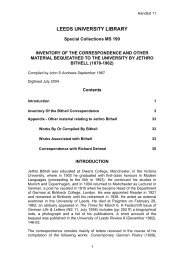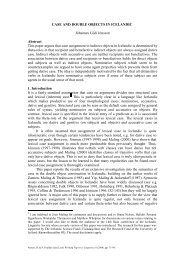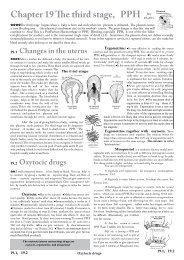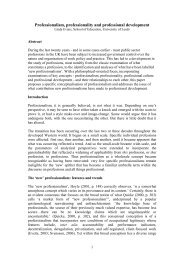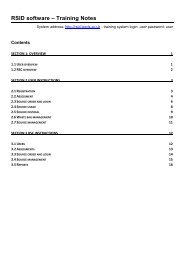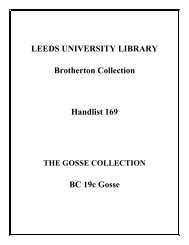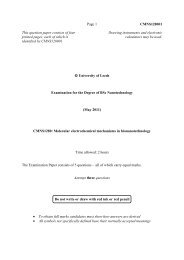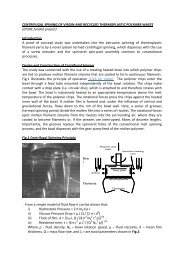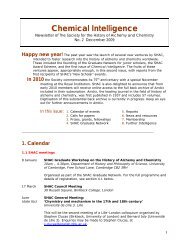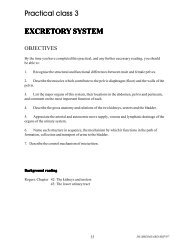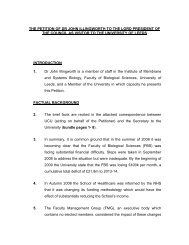“iLearn, iTrain, iTeach: - University of Leeds
“iLearn, iTrain, iTeach: - University of Leeds
“iLearn, iTrain, iTeach: - University of Leeds
Create successful ePaper yourself
Turn your PDF publications into a flip-book with our unique Google optimized e-Paper software.
work, but also extremely rewarding when they 'get it'. I feel it's a greater duty to do the absolute<br />
best I can and give it my all”<br />
“Students do have the ability to surprise you. Some students appear quite unmotivated until you<br />
get to know them and they turn out to be amongst the best students.”<br />
Within all these hopes, fears, insecurities and frustrations, the importance <strong>of</strong> the induction<br />
period into the initial teacher education programme becomes paramount. The induction<br />
becomes about the recognition on behalf <strong>of</strong> the trainee that the construction <strong>of</strong> their pr<strong>of</strong>essional<br />
identity and self is about to undergo rapid transformation. The induction period becomes an<br />
attempt to turn this reflection into more situated learning – to contextualise first visits to<br />
placements and first contacts with learners within boarder brush strokes. It is this research<br />
problematic that has lead to the construction <strong>of</strong> the learner voice podcasting resource that this<br />
paper addresses:<br />
How can we give a voice to the learner that can be better understood by the trainee teacher?<br />
Talking audio; talking podcasting<br />
The term e-Learning 2.0 is used to refer to new ways <strong>of</strong> thinking about e-learning inspired by the<br />
emergence <strong>of</strong> Web 2.0 technologies, tools, s<strong>of</strong>tware and platforms. This new e(nhanced)-<br />
learning places increased emphasis on social learning and the use <strong>of</strong> social networking and<br />
social s<strong>of</strong>tware such as blogs, wikis, podcasts and virtual worlds such as „second life‟. Web 2.0<br />
is a recognition that the virtual world <strong>of</strong> high-speed communications technology has moved on –<br />
and it has moved on due to very changes in the technology itself: how it maps together, how it<br />
works outside <strong>of</strong> „real time‟ and how users adopt tools with fluidity and „intuitive‟ flair the more<br />
exposed we become. The growth <strong>of</strong> users, increased interconnected interactivity <strong>of</strong> new internet<br />
tools and the affordability and availability <strong>of</strong> broadband „always-on‟ internet connections, has led<br />
Page 6 <strong>of</strong> 19



